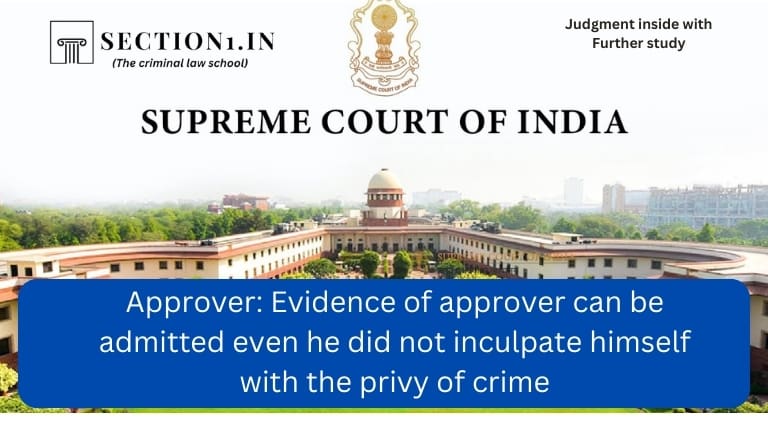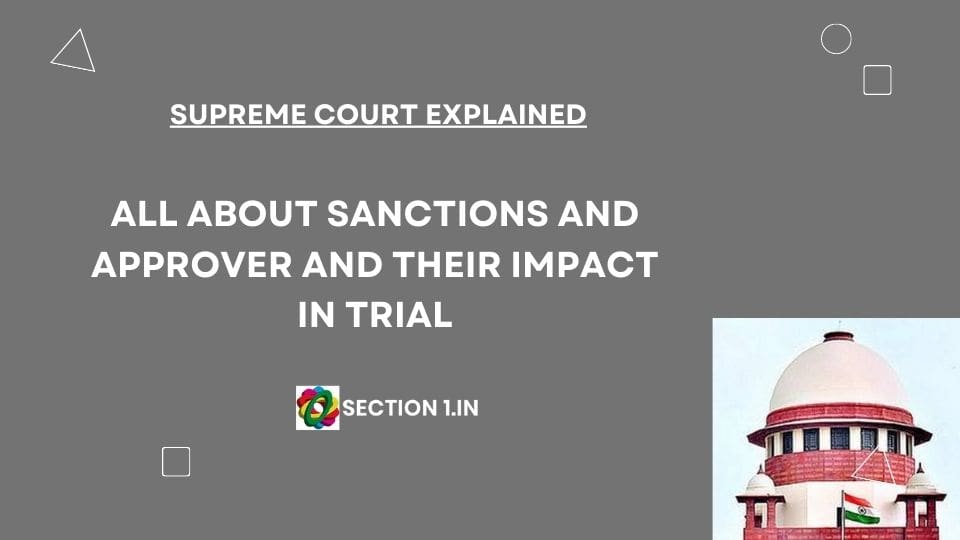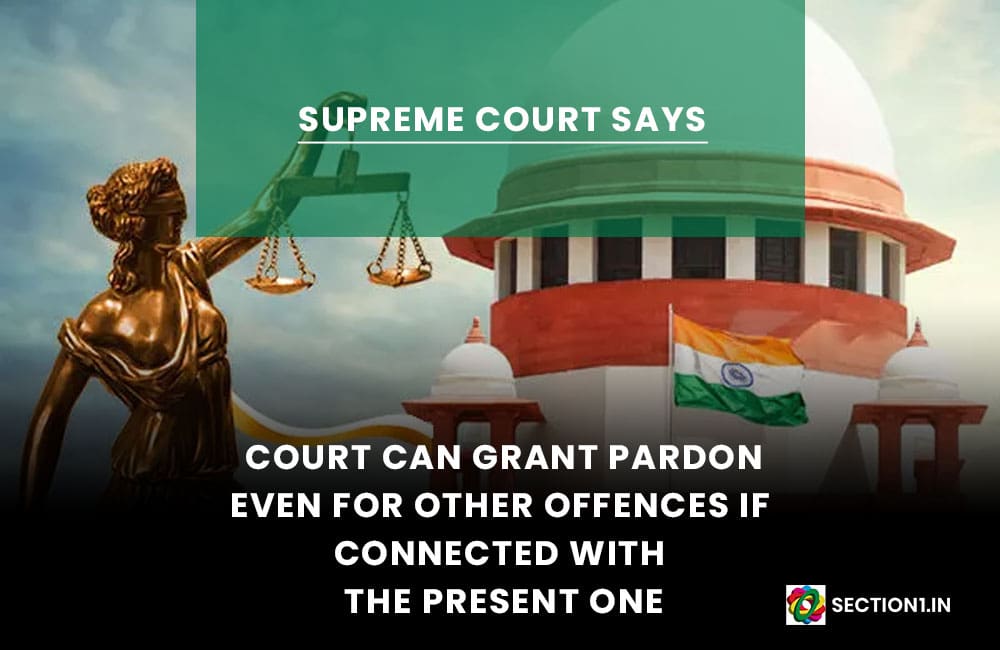Appeal against criminal death reference
This is an appeal against the judgment dated 09.01.2006 of the High Court of Rajasthan in D.B. Criminal Death Reference No. 1 of 2005 and D.B. Criminal Appeal Nos. 261 of 2005, 347 of 2005 and 431 of 2005.
Facts and investigation
2. The facts very briefly are that on 01.11.2003 at 10.45 P.M., Prem Bahadur Singh, Station House Officer, Nadbai Police Station, received an information on telephone that a woman has been murdered in the forest of Kishanpura close to the railway track and that a person has been nabbed. The Station House Officer reached the place of occurrence at 10.55 P.M. and found 10 to 15 villagers standing there who told him that at about 10.30 P.M. they heard someone crying and they came running and saw two persons running away towards Khedali along the railway track on a motorcycle and the third person running towards the fields and they managed to catch this third person named Rajesh and they also found a girl in a semi-naked condition lying dead. When the Station House Officer questioned Rajesh, he told that on 01.11.2003 at about 4 to 5 O’clock in the evening, respondent- Ram Niwas and the respondent-Balveer brought the girl named Rekha on the motorcycle of Ram Niwas, bearing Registration No. RJ-29-2M-2370, along the Mandawar railway track towards Khedali and Ram Niwas, Balveer and Rajesh had sexual intercourse with Rekha and thereafter Ram Niwas and Balveer wanted to kill Rekha by gagging and pressing her neck, but Rajesh asked them not to do so and thereafter Rekha was made to sit on the motorcycle and brought along the railway track to the place of occurrence and Ram Niwas and Balveer killed Rekha by strangulating her with her Chunni (scarf) and by causing injury on her neck and feet. Rajesh also told Station House Officer that both Ram Niwas and Balveer gave Rajesh some beating, but he managed to escape and started running and shouting. Rajesh also told the Station House Officer that both Ram Niwas and Balveer escaped on the motorcycle along the railway track towards Khedali. The Station House Officer then examined the dead body of Rekha (hereinafter referred to as ‘the deceased’) and came back to the Police Station and registered the First Information Report (for short ‘FIR’) under Sections 376 and 302 read with Section 34 of the Indian Penal Code (for short ‘IPC’) against Rajesh, Ram Niwas and Balveer and handed over investigation to Mohan Singh, the Sub-Inspector (for short ‘the I.O.’).
Trial and death sentence
3. On 29.12.2003, the statement of Rajesh was recorded under Section 164 of the Code of Criminal Procedure, 1973 (for short ‘Cr.P.C.’) and on 16.01.2004, the I.O. submitted an application before the Chief Judicial Magistrate, Bharatpur, for making Rajesh an approver under Section 306, Cr.P.C. and on 19.01.2004, the Chief Judicial Magistrate passed an order tendering pardon to Rajesh on the grounds that he was the sole eye-witness of the incident and without the evidence of Rajesh, there was possibility of acquittal of the two respondents. The Chief Judicial Magistrate in his order dated 19.01.2004 stated that the pardon was being tendered for the purpose of obtaining the evidence of Rajesh on the condition that he shall disclose the truth about each and every information, circumstance and person (directly or indirectly connected with the incident) relating to the offence, within his knowledge. Thereafter, charges were framed against the two respondents under Section 376(2)(g), IPC, and alternatively under Sections 376, 302 and 34, IPC. Since the two respondents denied the charges, the trial was held and at the trial, as many as 32 witnesses including Rajesh (PW-1) were examined and a large number of documents and material objects were exhibited. The trial court, after examining and discussing the evidence on record and in particular the evidence of Rajesh (PW-1), convicted both the respondents under Sections 376(2)(g) and 302/34, IPC. Thereafter, the trial court heard learned counsel for the respondents on the point of sentence and sentenced both the respondents to rigorous imprisonment for ten years with fine of Rs.1,000/- each and in default of payment of fine, to undergo simple imprisonment for six months for the offence under Section 376(2)(g), IPC, and sentenced them to death with fine of Rs.1,000/- each and in default of payment of fine, to undergo simple imprisonment for six months for the offence under Section 302/34, IPC, by order dated 05.03.2005.
Hon’ble High court rejected the testimony of the approver (PW.1) set aside the conviction (death sentence) and further acquitted the respondents
4. Aggrieved, the respondents filed criminal appeals before the High Court and the sentence of death was also referred to the High Court. In the impugned judgment, the High Court found that the prosecution case was anchored in the sole testimony of the sole witness Rajesh (PW-1), but his testimony as an approver could not be accepted as he had not inculpated himself in the crime in his statement recorded under Section 164, Cr.P.C., or in his statement before the Chief Judicial Magistrate for grant of pardon under Section 306, Cr.P.C. and as he was not privy to the crime, he cannot be held to be an approver. The High Court further held that the evidence of PW-1 was not supported by other circumstantial evidence and in the absence of any corroboration of the evidence of PW-1 in material particulars, it was difficult to uphold the conviction of the respondents on the basis of such an unreliable witness. By the impugned judgment, the High Court, therefore, declined to accept the death reference and allowed the three appeals of the respondents and set aside the judgment of the trial court and acquitted the respondents of the offences under Sections 376(2)(g) and 302/34, IPC, and directed that the respondents be released forthwith. Aggrieved by the impugned judgment, the State of Rajasthan is in appeal before us.
[Hon’ble High court has held that the approver did not inculpate himself in the crime and hence rejected his testimony]
Findings of the Court
The accomplice is removed from the category of co-accused and put into the category of witness
15. The first question that we have to decide is whether the High Court is right in coming to the conclusion that for being an approver within the meaning of Section 306, Cr.P.C., a person has to inculpate himself in the offence and has to be privy to the crime, otherwise he removes himself from the category of an accomplice and places himself as an eyewitness. Section 306, Cr.P.C. provides that with a view to obtaining the evidence of any person supposed to have been directly or indirectly concerned in or privy to an offence, the Magistrate may tender a pardon to such person on condition of his making a full and true disclosure of the whole circumstances within his knowledge relative to the offence and to every other person concerned, whether as principal or abettor, in the commission thereof. This Court in the case of Suresh Chandra Bahri v. State of Bihar [1995 Supp (1) SCC 80] explained the object of Section 306 Cr.P.C. in the following words:
“The object of Section 306 therefore is to allow pardon in cases where heinous offence is alleged to have been committed by several persons so that with the aid of the evidence of the person granted pardon the offence may be brought home to the rest. The basis of the tender of pardon is not the extent of the culpability of the person to whom pardon is granted, but the principle is to prevent the escape of the offenders from punishment in heinous offences for lack of evidence. There can therefore be no objection against tender of pardon to an accomplice simply because in his confession, he does not implicate himself 19 Page 20 to the same extent as the other accused because all that Section 306 requires is that pardon may be tendered to any person believed to be involved directly or indirectly in or privy to an offence.”
Thus, the High Court failed to appreciate that the extent of culpability of the accomplice in an offence is not material so long as the magistrate tendering pardon believes that the accomplice was involved directly or indirectly in or was privy to the offence. The High Court also failed to appreciate that Section 133 of the Indian Evidence Act provides that an accomplice shall be a competent witness against an accused person and when the pardon is tendered to an accomplice under Section 306, Cr.P.C., the accomplice is removed from the category of co-accused and put into the category of witness and the evidence of such a witness as an accomplice can be the basis of conviction as provided in Section 133 of the Indian Evidence Act.
Approver and corroboration
16. As a rule of prudence, however, as provided in Illustration (b) to Section 114 of the Indian Evidence Act, the Court will presume that an accomplice is unworthy of credit, unless he is corroborated in material particulars. In Rameshwar s/o Kalyan Singh v. The State of Rajasthan (supra), this Court laid down the kind of evidence which should, or would, be regarded as corroboration of the testimony of an accomplice and held that it is not necessary that there should be independent confirmation of every material circumstance but independent evidence must not only make it safe to believe that the crime was committed and must in some way reasonably connect the accused with the crime. In the language of this Court in the aforesaid case:
“All that is necessary is that there should be independent evidence which will make it reasonably safe to believe the witness’ story that the accused was the one, or among those, who committed the offence.”
In this case, the Court also clarified that corroboration need not be by direct evidence that the accused committed the crime and it is sufficient if it is merely circumstantial evidence of the connection of the accused with the crime. In the aforesaid case, this Court also explained that unless the testimony of an accomplice is treated as evidence, many crimes which are usually committed between accomplices in secret, particularly offences with females, could otherwise never be brought to justice. With these principles with regard to the testimony of an accomplice in mind, we may now examine the testimony of PW-1 and the corroboration of such testimony by material particulars, if any, so as to connect Ram Niwas and Balveer in the offences.
Section 157 Evidence Act: Corroboration explained
18. Section 157 of the Indian Evidence Act states that in order to corroborate the testimony of a witness, any former statement made by such witness relating to the same fact at or about the time when the fact took place, or before any authority legally competent to investigate the fact, may be proved. PW-5, the SHO of the Police Station Nadbai, has stated in his evidence that at 10.45 p.m. on 01.11.2003 someone informed him over the telephone that a woman had been murdered and her body was lying along with the railway track in the jungle of Kishanpura and one person in this connection had been nabbed and he reached the place of incident and took that person Rajesh (PW-1) into custody and on the basis of the statement made by PW-1, the First Information Report (Ext.P-12) was prepared. We have Ext.P-12, the First Information Report in Hindi, and we find that the aforesaid testimony of PW-1 is corroborated by the statement of PW-1 made before PW-5 and recorded in the FIR (Ext. P-12) soon after the incident on 01.11.2003. In Rameshwar s/o Kalyan Singh v. The State of Rajasthan (supra), this Court after extracting Section 157 of the Indian Evidence Act has held: “The section makes no exceptions, therefore, provided the condition prescribed, that is to say “at or about the time etc.” are fulfilled there can be no doubt that such a statement is legally admissible in India as corroboration. The weight to be attached to it is, of course, another matter and it may be that in some cases the evidentiary value of two statements emanating from the same tainted source may not be high, but in view of Section 118 its legal admissibility as corroboration cannot be questioned.” Thus, even though the evidence given at the trial and the former statement relating to the incident is from the same tainted source of an accomplice (PW-1), the former statement of PW-1 as recorded in Ext.P-12 is legally 24 Page 25 admissible as corroborative of the evidence of PW-1 in the trial court.
Approver evidence corroborated and Apex court confirmed the sentence
23. Thus, the testimony of PW-1 was corroborated by material particulars qua Ram Niwas and Balveer and the only possible view on the evidence on record in this case is that both the respondents committed the rape and murder of the deceased on 01.11.2003 and the trial court had rightly convicted them under Section 376(2)(g) and Section 302 read with Section 34, IPC. The decision of this Court in Andhra Pradesh through CBI v. M. Durga Prasad & Ors. (supra) cited by Mr. Upadhyay applies only to a case where the view taken by the High Court on the evidence that the accused should be acquitted is a possible one and in such a case this Court will not interfere with the order of acquittal passed by the High Court. In the facts of the present case, however, the view taken by the High Court that the respondents were entitled to acquittal was not at all a possible view. The evidence on record, considered in the light of the provisions of the Indian Evidence Act and in particular Sections 27, 114 Illustration (b), 133 and 157 thereof establish beyond reasonable doubt that the respondents were guilty of the offences under Section 376(2)(g) and Section 302 read with Section 34, IPC.
Death sentence liberated to life sentence
24. For the offence under Section 302, IPC, the accused is liable to be punished with death or imprisonment for life and also liable to fine and for the offence under Section 376(2) (g), IPC, the accused are liable to be punished with rigorous imprisonment for a term which shall not be less than ten years but which may be for life and also liable to fine. The trial court has recorded special reasons for imposing the punishment of death on the respondents and these are that the respondents deceived and took away the deceased, turn wise committed rape on her in the darkness of night and thereafter committed her murder by throttling her by her chunni (scarf) and hence they were not entitled for any leniency and should be punished with death. In our view, the reasons given by the trial court do not make out the case to be a rarest of rare cases in which death sentence could be awarded to the respondents. As has been held by the Constitution Bench of this Court in Bachan Singh v. State of Punjab [AIR 1980 SC 898]:
“… As we read Sections 354(3) and 235(2) and other related provisions of the Code of 1973, it is quite clear to us that for making the choice of punishment or for ascertaining the existence or absence of “special reasons” in that context, the Court must pay due regard both to the crime and the criminal. …”
Thus, for awarding death sentence, special reasons have to be recorded as provided in Section 354(3), Cr.P.C., and while recording such special reasons, the Court must pay due regard both to the crime and the criminal. In this case, there are materials to show that the crime committed by the respondents, both rape and murder of the deceased, were cruel, but there were no materials to establish that the character of the respondents was of extreme depravity so as to make them liable for the punishment of death. We are, thus, of the view that the respondents should be punished for life for the offence of murder under Section 302, IPC. For offence under Section 376(2)(g), IPC, the trial court has awarded the punishment of 10 years rigorous imprisonment which we would like to maintain.
Party
State of Rajasthan …… Appellant Versus Balveer @ Balli & Anr. ….. Respondents – CRIMINAL APPEAL No. 942 OF 2006 – October 31, 2013
https://main.sci.gov.in/jonew/judis/40947.pdf
Further study
- COURT CAN GRANT PARDON EVEN FOR OTHER OFFENCES IF CONNECTED WITH THE PRESENT ONE
- ALL ABOUT SANCTION AND APPROVER
- APPROVER CAN BE RELEASED BY INHERENT POWERS u/s 482 Cr.P.C ONLY AND NOT ON REGULAR BAIL WHILE TRIAL IS PENDING
- WHETHER THE JUDICIAL CONFESSION OF AN APPROVER IS A SUBSTANTIVE PIECE OF EVIDENCE?
- Acquittal: If there are convincing eyewitnesses then non-examination of expert does not affect the prosecution case







2 Comments
[…] Approver: Evidence of approver can be admitted even he did not inculpate himself with the crime […]
[…] Approver: Evidence of approver can be admitted even he did not inculpate himself with the crime […]